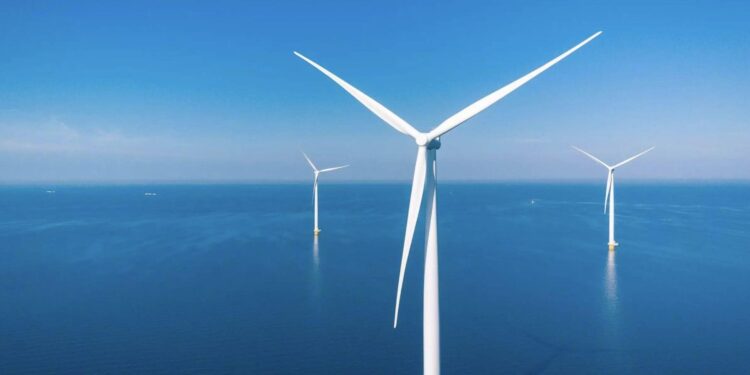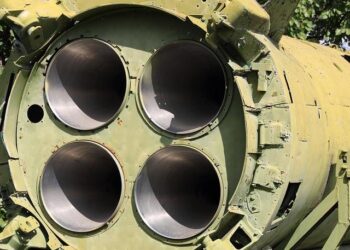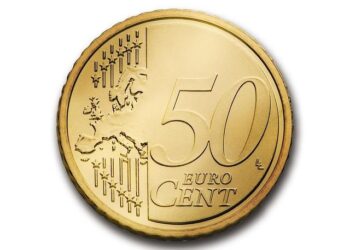Lithuania has officially canceled its second offshore wind tender after attracting only a single bidder, raising questions about the competitiveness and attractiveness of its emerging offshore wind sector. The latest move comes amid broader challenges facing the Baltic nation’s ambitions to expand renewable energy capacity and secure sustainable power sources. Industry observers are closely watching how Lithuania will adjust its strategy to stimulate further investment in the nascent offshore wind market.
Lithuania Halts Second Offshore Wind Tender Due to Lack of Competitive Bids
Lithuania’s ambition to expand its offshore wind capacity encountered a setback as the government decided to call off its second tender after only a single company submitted a bid. The lack of multiple competitive offers has raised concerns about investor appetite and the overall attractiveness of the country’s offshore wind market in the current economic and regulatory climate. The Ministry of Energy highlighted that the tender process requires competition to ensure fair pricing and robust project execution, a benchmark unmet in this instance.
Key factors contributing to the limited interest include:
- High capital expenditure and financing challenges amid global market volatility
- Uncertainties related to grid connection and permitting timelines
- Competitive subsidy frameworks in neighboring Baltic countries attracting developer focus
| Aspect | Details |
|---|---|
| Planned Capacity | 700 MW |
| Number of Bidders | 1 |
| Reason for Cancellation | Insufficient Competition |
| Next Steps | Market reassessment and policy review |
Market Challenges and Investor Hesitations Impact Offshore Wind Development
Despite ambitious targets to boost offshore wind capacity, Lithuania’s latest tender process has highlighted persistent obstacles hampering market expansion. The tender ultimately failed to attract multiple bidders, signaling caution among investors wary of the complex regulatory environment, high capital expenditure, and evolving technological standards. This reluctance underscores concerns over project viability and long-term returns in a region still building its offshore wind infrastructure. The lack of competitive offers reflects broader apprehensions about supply chain bottlenecks and fluctuating policy support.
Investor hesitations are further compounded by geopolitical uncertainties and the financial risk perceived in emergent markets. Factors such as grid connection delays, environmental permitting challenges, and financing hurdles create an uneven playing field, discouraging aggressive market participation. Stakeholders now call for improved clarity in tender frameworks, streamlined approval processes, and targeted incentives to restore confidence. Key challenges identified include:
- Limited competition due to stringent qualification criteria
- High upfront development costs and financing risks
- Uncertainties in regulatory and permitting timelines
- Supply chain disruptions impacting equipment delivery
- Ambiguous grid integration protocols
| Challenge | Impact on Market | Investor Concern Level |
|---|---|---|
| Regulatory Ambiguity | Delayed project approvals | High |
| Capital Intensity | Limited funding availability | Medium |
| Supply Chain | Project postponements | Medium |
| Market Competition | Reduced bidding interest | High |
Strategies to Attract More Participants in Future Lithuanian Offshore Wind Projects
To boost engagement in forthcoming Lithuanian offshore wind ventures, it is imperative to address the underlying concerns deterring potential bidders. Enhancing transparency around project specifications, timelines, and financial incentives can build investor confidence. Additionally, streamlining regulatory procedures and offering clear, supportive policies tailored to the offshore wind sector will reduce entry barriers. A robust communication campaign emphasizing Lithuania’s commitment to sustainable energy and its long-term market potential could further entice international players who remain hesitant due to geopolitical uncertainties or market ambiguities.
Collaboration also plays a pivotal role. Facilitating partnerships between local businesses and experienced offshore developers can create knowledge transfer opportunities and mitigate risk perceptions. Hosting dedicated workshops and interactive forums where stakeholders can discuss challenges and formulate solutions may generate a more vibrant bidding environment. Consider the following strategic elements designed to enhance participant numbers:
- Financial incentives: Introduce risk-sharing mechanisms and competitive subsidies.
- Capacity building: Support local supply chain development to improve project feasibility.
- Market certainty: Guarantee long-term contracts to stabilize revenue streams.
- Regulatory clarity: Simplify permit processes and speed up environmental assessments.
| Strategy | Expected Impact | |||||||
|---|---|---|---|---|---|---|---|---|
| Risk-sharing financial packages | Increased investor confidence and lower entry barriers | |||||||
| Local supply chain incentives | Strengthened project logistics and regional economy | |||||||
| Clear and swift permitting | To boost engagement in forthcoming Lithuanian offshore wind ventures, it is imperative to address the underlying concerns deterring potential bidders. Enhancing transparency around project specifications, timelines, and financial incentives can build investor confidence. Additionally, streamlining regulatory procedures and offering clear, supportive policies tailored to the offshore wind sector will reduce entry barriers. A robust communication campaign emphasizing Lithuania’s commitment to sustainable energy and its long-term market potential could further entice international players who remain hesitant due to geopolitical uncertainties or market ambiguities. Collaboration also plays a pivotal role. Facilitating partnerships between local businesses and experienced offshore developers can create knowledge transfer opportunities and mitigate risk perceptions. Hosting dedicated workshops and interactive forums where stakeholders can discuss challenges and formulate solutions may generate a more vibrant bidding environment. Consider the following strategic elements designed to enhance participant numbers:
|
















